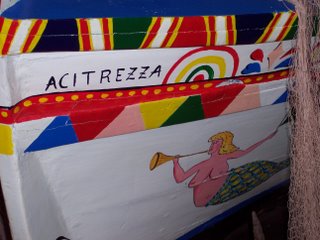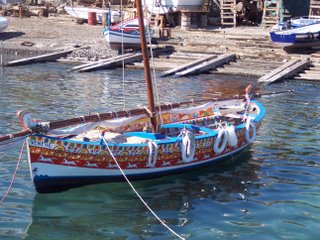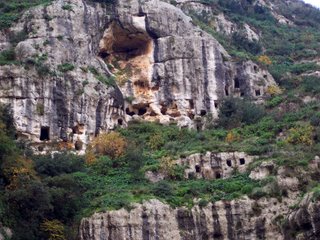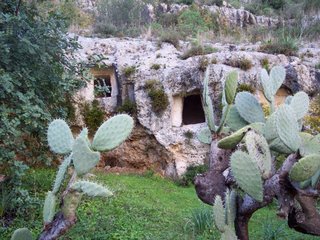Aci Trezza Fishing Boats
 Many Sicilian men still make a living as fishermen, and nowhere is this more apparent than in the town of Aci Trezza (AH-chee TRAY-tsa), a charming village just north of Catania. Here you can still see the boats, the men, the shops, and the fish market. Oh, and they even now have a museum of fishing history! Thanks to my friends Jan and Flint, unofficial tour guides and marketers for Aci Trezza for opening my eyes to all of this recently on a beautiful Sunday in November.
Many Sicilian men still make a living as fishermen, and nowhere is this more apparent than in the town of Aci Trezza (AH-chee TRAY-tsa), a charming village just north of Catania. Here you can still see the boats, the men, the shops, and the fish market. Oh, and they even now have a museum of fishing history! Thanks to my friends Jan and Flint, unofficial tour guides and marketers for Aci Trezza for opening my eyes to all of this recently on a beautiful Sunday in November.The original purpose of the Sunday morning visit was to sample the ravioli del forno, a seasonal pastry filled with fresh, rich, heavy ricotta that is served warm and perhaps eaten with a spoon. We enjoyed that immensely with cappucino at a cafe near the main piazza. But afterwards, we went to the museum, just a few steps up the hill from the church on the main square, and saw memorabilia from a major motion picture filmed here in the 1950s as well as an authentic house (one room, really) of a fisherman's family from not so long ago. The guide patiently explained every item in the room and demonstrated the art of making fishing nets for us. Her English was very good, in spite of her apologies. There is also a miniscule gift shop with some interesting fishing art (wooden boat replicas for the wall).
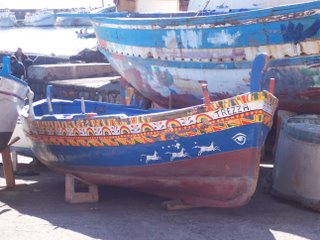 Flint knows half the town, so he arranged a boat ride for us out to the Cyclops Rocks, jutting little islands of lava that the one-eyed monster (then blind) threw at the retreating Odysseus according to legend. We rode in one the brightly colored boats piloted by a shirtless Odysseus himself (this, in November) and spent some time on one of the lava outcrops before he returned to get us.
Flint knows half the town, so he arranged a boat ride for us out to the Cyclops Rocks, jutting little islands of lava that the one-eyed monster (then blind) threw at the retreating Odysseus according to legend. We rode in one the brightly colored boats piloted by a shirtless Odysseus himself (this, in November) and spent some time on one of the lava outcrops before he returned to get us.Our day ended with a fabulous seafood lunch overlooking the water--black spaghetti once again--yum! We also had some of the largest and tastiest mussels I have ever had. Oh, that wasn't quite the end--gelati and cafe were in order before stuffing ourselves in the Mini and heading home.
The boats are brightly painted, but not just for tourist effect! We found out at the museum that each of the designs around the top edge is symbolic of one of the conquerors of Sicily--Greek, Roman, Norman (French), Arabic, or Spanish. The mermaid? Well, she's just symbolic of all the blondes that Sicilian men love.
